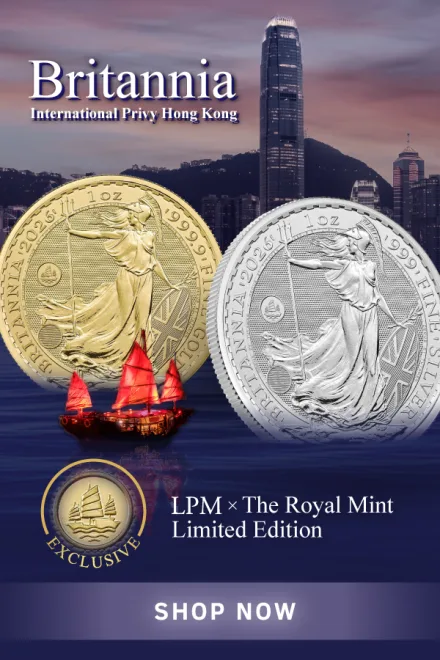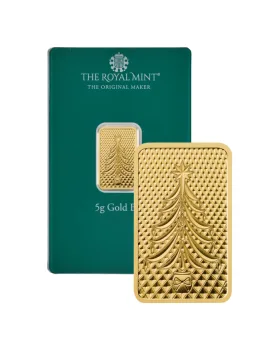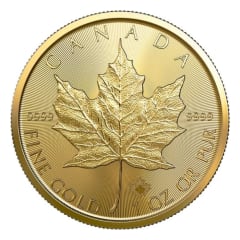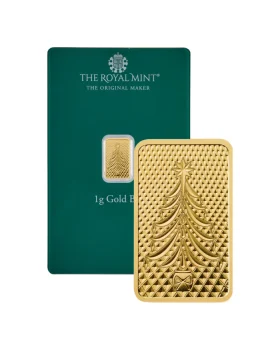Hot New Releases
Hot New Releases
 2025 2oz Australia Santa's Workshop .9999 Silver Antiqued Coloured Coinas low as HK$2,656.17New New CollectibleCollectibl...2025 2oz Australia Santa's Workshop .9999 Silver Antiqued Coloured CoinVolume PricingQTY1+per pcCheck/WireHK$2,653.81Credit Card/PayPalHK$2,793.47
2025 2oz Australia Santa's Workshop .9999 Silver Antiqued Coloured Coinas low as HK$2,656.17New New CollectibleCollectibl...2025 2oz Australia Santa's Workshop .9999 Silver Antiqued Coloured CoinVolume PricingQTY1+per pcCheck/WireHK$2,653.81Credit Card/PayPalHK$2,793.47 2025 1 oz Niue Coca Cola Holiday Bottle .9999 Silver Coloured Proof-like Shaped Coinas low as HK$1,445.95New New Pre Sale Pre Sale CollectibleCollectibl...2025 1 oz Niue Coca Cola Holiday Bottle .9999 Silver Coloured Proof-like Shaped CoinVolume PricingQTY1+per pcCheck/WireHK$1,444.77Credit Card/PayPalHK$1,520.81
2025 1 oz Niue Coca Cola Holiday Bottle .9999 Silver Coloured Proof-like Shaped Coinas low as HK$1,445.95New New Pre Sale Pre Sale CollectibleCollectibl...2025 1 oz Niue Coca Cola Holiday Bottle .9999 Silver Coloured Proof-like Shaped CoinVolume PricingQTY1+per pcCheck/WireHK$1,444.77Credit Card/PayPalHK$1,520.81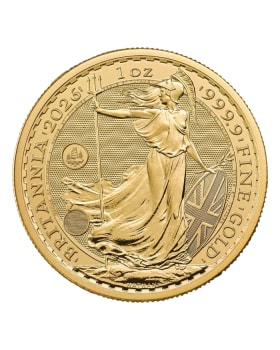 2026 1 oz Great Britain Britannia - International Privy Hong Kong .9999 Gold BU Coinas low as HK$34,927.65LPM Exclusive LPM Exclus...2026 1 oz Great Britain Britannia - International Privy Hong Kong .9999 Gold BU CoinVolume PricingQTY1+per pcCheck/WireHK$34,997.25Credit Card/PayPalHK$36,839.24QTY3+per pcCheck/WireHK$34,957.97Credit Card/PayPalHK$36,797.85QTY5+per pcCheck/WireHK$34,942.26Credit Card/PayPalHK$36,781.35QTY10+per pcCheck/WireHK$34,918.70Credit Card/PayPalHK$36,756.53
2026 1 oz Great Britain Britannia - International Privy Hong Kong .9999 Gold BU Coinas low as HK$34,927.65LPM Exclusive LPM Exclus...2026 1 oz Great Britain Britannia - International Privy Hong Kong .9999 Gold BU CoinVolume PricingQTY1+per pcCheck/WireHK$34,997.25Credit Card/PayPalHK$36,839.24QTY3+per pcCheck/WireHK$34,957.97Credit Card/PayPalHK$36,797.85QTY5+per pcCheck/WireHK$34,942.26Credit Card/PayPalHK$36,781.35QTY10+per pcCheck/WireHK$34,918.70Credit Card/PayPalHK$36,756.53 2026 1oz Australia Lunar Horse .9999 Silver Rectangular BU Coinas low as HK$542.62New New Pre Sale Pre Sale2026 1oz Australia Lunar Horse .9999 Silver Rectangular BU CoinVolume PricingQTY1+per pcCheck/WireHK$545.37Credit Card/PayPalHK$574.04QTY20+per pcCheck/WireHK$543.41Credit Card/PayPalHK$572.00QTY100+per pcCheck/WireHK$541.45Credit Card/PayPalHK$569.96
2026 1oz Australia Lunar Horse .9999 Silver Rectangular BU Coinas low as HK$542.62New New Pre Sale Pre Sale2026 1oz Australia Lunar Horse .9999 Silver Rectangular BU CoinVolume PricingQTY1+per pcCheck/WireHK$545.37Credit Card/PayPalHK$574.04QTY20+per pcCheck/WireHK$543.41Credit Card/PayPalHK$572.00QTY100+per pcCheck/WireHK$541.45Credit Card/PayPalHK$569.96 2026 30g China Panda .999 Gold BU CoinVolume PricingQTY1+per pcCheck/WireHK$33,932.42Credit Card/PayPalHK$35,718.33QTY3+per pcCheck/WireHK$33,899.43Credit Card/PayPalHK$35,683.62QTY5+per pcCheck/WireHK$33,882.94Credit Card/PayPalHK$35,666.26QTY100+per pcCheck/WireHK$33,734.63Credit Card/PayPalHK$35,510.18
2026 30g China Panda .999 Gold BU CoinVolume PricingQTY1+per pcCheck/WireHK$33,932.42Credit Card/PayPalHK$35,718.33QTY3+per pcCheck/WireHK$33,899.43Credit Card/PayPalHK$35,683.62QTY5+per pcCheck/WireHK$33,882.94Credit Card/PayPalHK$35,666.26QTY100+per pcCheck/WireHK$33,734.63Credit Card/PayPalHK$35,510.18 2026 1 oz Pamp Suisse Lunar Legends Series - Legend of the 1000 Mile Horse .999 Silver Baras low as HK$935.37Pre Sale Pre Sale2026 1 oz Pamp Suisse Lunar Legends Series - Legend of the 1000 Mile Horse .999 Silver BarVolume PricingQTY1+per pcCheck/WireHK$973.47Credit Card/PayPalHK$1,024.68QTY3+per pcCheck/WireHK$965.62Credit Card/PayPalHK$1,016.44QTY5+per pcCheck/WireHK$957.76Credit Card/PayPalHK$1,008.19QTY10+per pcCheck/WireHK$934.20Credit Card/PayPalHK$983.37
2026 1 oz Pamp Suisse Lunar Legends Series - Legend of the 1000 Mile Horse .999 Silver Baras low as HK$935.37Pre Sale Pre Sale2026 1 oz Pamp Suisse Lunar Legends Series - Legend of the 1000 Mile Horse .999 Silver BarVolume PricingQTY1+per pcCheck/WireHK$973.47Credit Card/PayPalHK$1,024.68QTY3+per pcCheck/WireHK$965.62Credit Card/PayPalHK$1,016.44QTY5+per pcCheck/WireHK$957.76Credit Card/PayPalHK$1,008.19QTY10+per pcCheck/WireHK$934.20Credit Card/PayPalHK$983.37 0.5 gram Peanuts Christmas Charlie Brown & Snoopy .9999 Proof-like Gold Baras low as HK$1,178.64New New Pre Sale Pre Sale0.5 gram Peanuts Christmas Charlie Brown & Snoopy .9999 Proof-like Gold BarVolume PricingQTY1+per pcCheck/WireHK$1,177.70Credit Card/PayPalHK$1,239.68
0.5 gram Peanuts Christmas Charlie Brown & Snoopy .9999 Proof-like Gold Baras low as HK$1,178.64New New Pre Sale Pre Sale0.5 gram Peanuts Christmas Charlie Brown & Snoopy .9999 Proof-like Gold BarVolume PricingQTY1+per pcCheck/WireHK$1,177.70Credit Card/PayPalHK$1,239.68
Level Up Your Portfolio Here
ENDS IN
Alert! ⚡36% Off The Premium!
Trending Up! See What Others Love
Trending Up! See What Others Love
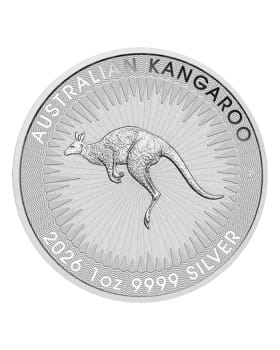 2026 1 oz Australia Kangaroo .9999 Silver BU CoinVolume PricingQTY1+per pcCheck/WireHK$537.52Credit Card/PayPalHK$565.80QTY25+per pcCheck/WireHK$535.55Credit Card/PayPalHK$563.75QTY100+per pcCheck/WireHK$533.59Credit Card/PayPalHK$561.71QTY250+per pcCheck/WireHK$531.63Credit Card/PayPalHK$559.59
2026 1 oz Australia Kangaroo .9999 Silver BU CoinVolume PricingQTY1+per pcCheck/WireHK$537.52Credit Card/PayPalHK$565.80QTY25+per pcCheck/WireHK$535.55Credit Card/PayPalHK$563.75QTY100+per pcCheck/WireHK$533.59Credit Card/PayPalHK$561.71QTY250+per pcCheck/WireHK$531.63Credit Card/PayPalHK$559.59 2025 1g Australia Spongebob SquarePants .9999 Gold Coloured Baras low as HK$3,928.36LPM Exclusive LPM Exclus... CollectibleCollectibl...2025 1g Australia Spongebob SquarePants .9999 Gold Coloured BarVolume PricingQTY1+per pcCheck/WireHK$3,926.48Credit Card/PayPalHK$4,133.14
2025 1g Australia Spongebob SquarePants .9999 Gold Coloured Baras low as HK$3,928.36LPM Exclusive LPM Exclus... CollectibleCollectibl...2025 1g Australia Spongebob SquarePants .9999 Gold Coloured BarVolume PricingQTY1+per pcCheck/WireHK$3,926.48Credit Card/PayPalHK$4,133.14 2026 1 oz Australia Lunar Series III - Year of the Horse .9999 Gold BU CoinVolume PricingQTY1+per pcCheck/WireHK$36,752.52Credit Card/PayPalHK$38,686.90QTY3+per pcCheck/WireHK$36,598.72Credit Card/PayPalHK$38,525.00
2026 1 oz Australia Lunar Series III - Year of the Horse .9999 Gold BU CoinVolume PricingQTY1+per pcCheck/WireHK$36,752.52Credit Card/PayPalHK$38,686.90QTY3+per pcCheck/WireHK$36,598.72Credit Card/PayPalHK$38,525.00 5 gram Pamp Suisse Coca-Cola Holiday Polar Bear .9999 Gold Proof like BarVolume PricingQTY1+per pcCheck/WireHK$6,475.27Credit Card/PayPalHK$6,816.10QTY3+per pcCheck/WireHK$6,459.56Credit Card/PayPalHK$6,799.52QTY5+per pcCheck/WireHK$6,451.70Credit Card/PayPalHK$6,791.28QTY10+per pcCheck/WireHK$6,435.99Credit Card/PayPalHK$6,774.70
5 gram Pamp Suisse Coca-Cola Holiday Polar Bear .9999 Gold Proof like BarVolume PricingQTY1+per pcCheck/WireHK$6,475.27Credit Card/PayPalHK$6,816.10QTY3+per pcCheck/WireHK$6,459.56Credit Card/PayPalHK$6,799.52QTY5+per pcCheck/WireHK$6,451.70Credit Card/PayPalHK$6,791.28QTY10+per pcCheck/WireHK$6,435.99Credit Card/PayPalHK$6,774.70 1 oz PAMP Suisse Good Luck Yellow Dragon .9999 Gold Proof like Bar (Varied Condition)HK$35,606.64 3% Off The Premium as low as HK$35,560.21Clearance Clearance1 oz PAMP Suisse Good Luck Yellow Dragon .9999 Gold Proof like Bar (Varied Condition)Volume PricingQTY1+per pcCheck/WireHK$35,507.82Credit Card/PayPalHK$37,376.68
1 oz PAMP Suisse Good Luck Yellow Dragon .9999 Gold Proof like Bar (Varied Condition)HK$35,606.64 3% Off The Premium as low as HK$35,560.21Clearance Clearance1 oz PAMP Suisse Good Luck Yellow Dragon .9999 Gold Proof like Bar (Varied Condition)Volume PricingQTY1+per pcCheck/WireHK$35,507.82Credit Card/PayPalHK$37,376.68 2026 1 oz Armenia Noah's Ark .9999 Gold BU CoinVolume PricingQTY1+per pcCheck/WireHK$35,283.09Credit Card/PayPalHK$37,140.09QTY3+per pcCheck/WireHK$35,231.80Credit Card/PayPalHK$37,086.13QTY5+per pcCheck/WireHK$35,197.63Credit Card/PayPalHK$37,050.15
2026 1 oz Armenia Noah's Ark .9999 Gold BU CoinVolume PricingQTY1+per pcCheck/WireHK$35,283.09Credit Card/PayPalHK$37,140.09QTY3+per pcCheck/WireHK$35,231.80Credit Card/PayPalHK$37,086.13QTY5+per pcCheck/WireHK$35,197.63Credit Card/PayPalHK$37,050.15
Why Choose LPM ?

No Hidden Fees
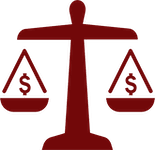
Competitive Pricing

Reliable
Established in 2012, LPM has grown to become one of the largest precious metals dealers in Asia today. We are committed to providing a reliable precious metals shopping solution with competitive pricing and an extensive product range. Discover More
Our Official Distributorships & Partners
Visit LPM Store

Address
2/F, 33 Des Voeux Road Central, Central, Hong Kong
(1-minute walk from MTR Central Station Exit B / Hong Kong Station Exit C)
In Store Hours
Mon-Fri 10am-7pm HKT
(Except for Hong Kong public holidays)
Phone
+852 3568 6834








